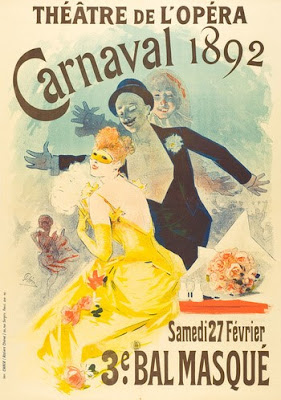Jules Cheret
THÉÂTRE DE L’OPÉRA – CARNAVAL
Date: 1892, 1892
Medium: Original lithograph
printed in colors on wove poster paper.
Dimensions: 48 3/4 × 34 3/8
in
123.8 × 87.3 cm
Biography:
The father of modern poster
art and a critical figure in the development of the French Belle Époque style,
Jules Chéret was the first artist to work with color lithography. Finding
little success in France due in part to inadequate printing technology, Chéret
moved to London and began designing perfume packaging for Rimmel during the
1860s. Rimmel became Chéret’s patron and financed his commercial lithography
studio in Paris. Although Chéret had a talent
for working with oil paint and pastels, he remains best known for his
lithographs, which served as the exemplar of poster design and color theory
during the late 19th century.
(https://www.artsy.net/artist/jules-cheret)
Statement:
When Roger Marx, one of the
leading art critics at the end of the nineteenth century, commented on the work
of Jules Chéret he did so with full confidence that Chéret was the artist who
had modernized posters, recognizing an artistic medium capable of reaching and
educating the general public.[1] The importance of Chéret's use of color
posters, as the extensive monographic exhibition at the Musée des Arts
Décoratifs in Paris makes amply clear, demonstrates how artistic
events—spectacles "en tout genre," new books and magazines, new
products in commerce and industry—would reach an ever expanding public
My Connection:
A famous French printmaker.
Praised for his lithographic posters. His work includes ads and posters for
theatres, caberets, and music halls. His theatrical style was influenced by the
Rococo movement. And in turn his style influenced artists such as Charles
Gesmar and Henri de Toulouse-Lautrec.
Carnival 1892 , these advertisements were some
of the precursors for the pop art movement. This one features one of his infamous “cherettes” his illustrations
of beautiful, lively, independent women which was a departure from the way
women had previously been depicted.




Comments
Post a Comment